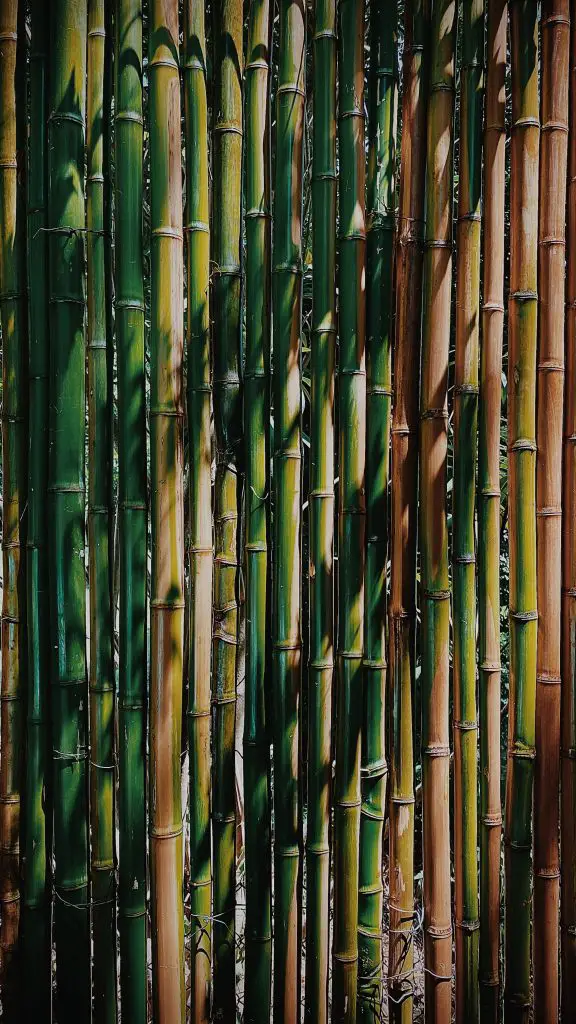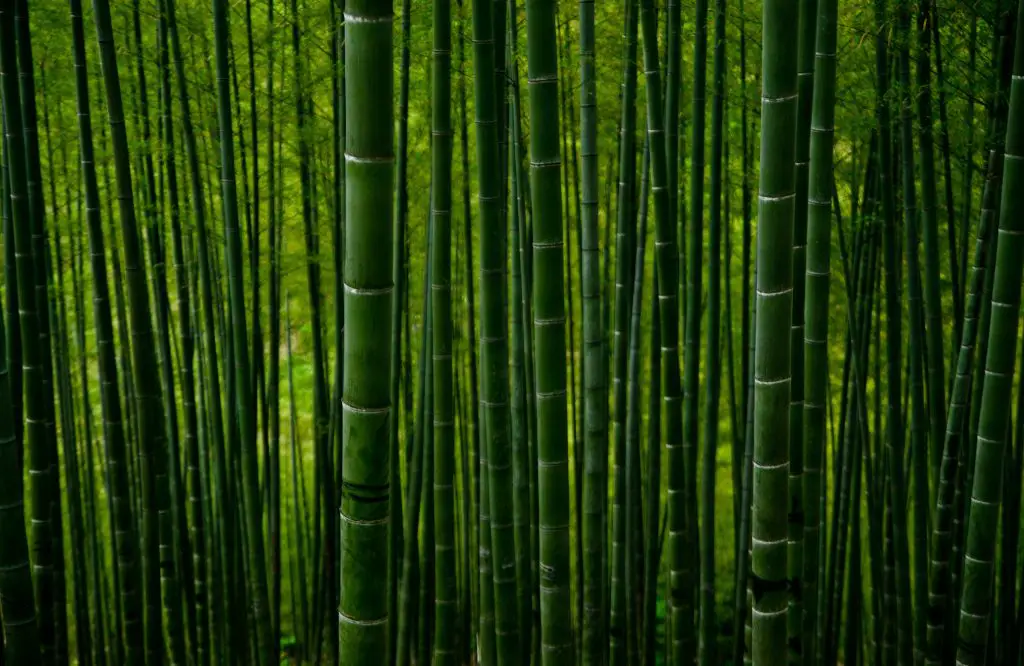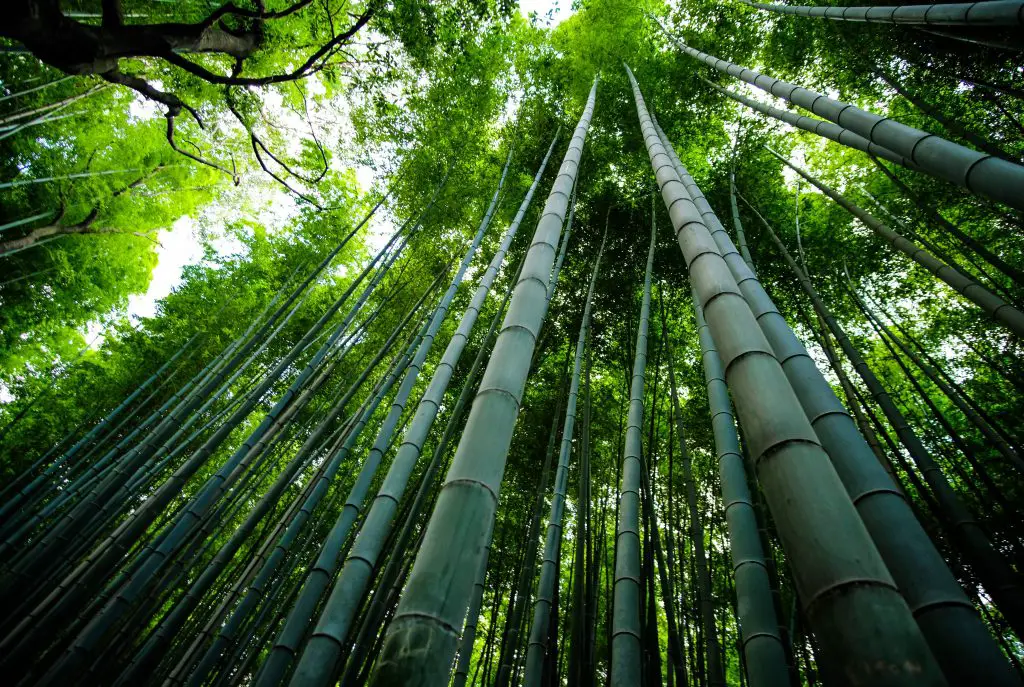Does Bamboo Grow Back After Being Cut? Bamboo is the fastest growing plant in the world and can grow up to a foot in a single day. For this reason, it is it an extremely popular plant to put into gardens provided that it is a clumping variety rather than the running variety as the running right variety is known to be a weed. So when your maintaining your bamboo plant and you need to cut it canes will it grow back.
Bamboo producers canes from the base of the plant if these canes are removed you will not see further growth from that particular shoot. The plant instead will produce additional shoots from the clump in different places. Any shoot that is produced will achieve its full height in a single season and then from that point gradually produce foliage from the node of the canes.
Bamboo plants are extremely useful in landscaping home gardens because they can produce a beautiful green foliage on relatively low-quality soils which provides an opportunity for the bamboo to be used has a screening plant along fences to provide additional privacy.
The plant is also extremely useful if you are a gardener that needs to use a lot of stakes in your garden as plant supports for the things like tomatoes, peas, snow peas, and sweet peas. Once the plants become established they will produce canes year-on-year in large numbers which can be harvested just like any other crop and used in support structures.
I personally have four or five bamboo plants running along the back fence of my garden which I harvest every year to produce dozens and dozens of canes which end up being used in my vegetable garden.

Will Bamboo Take Over My Garden
Bamboo has a notorious reputation for being a highly invasive species that will cause problems all over the place if you plant it. This reputation comes from the use of bamboo in the 70s which resulted in a lot of running bamboo being planted in gardens. The running bamboo puts out runners which extend several metres underground in a single year. These runners will then start producing canes of their own resulting in an ever-expanding forest of bamboo.
However, this is generally not a big problem if you select clumping bamboo which is the type that I have in my garden. I have had it in the garden for several years along and narrow section of a garden bed that was approximately 2 feet wide the bamboo has not grown beyond this area and I have not had to take any special measures to keep it under control.
So the answer to the question is that provided that you pick the right type of bamboo, which is clumping, it will not take over your garden.

How Do I Get Rid Of Bamboo Stumps?
As the bamboo will produce new shoots year on year from its root system which are progressively remove with secateurs you’ll find that you’ll build up a number of bamboo stumps at the base of the plant over a period of years.
As a result of this, it may be necessary to remove these stumps as the bamboo is cut to ensure that it remains vigorous and also prevent it from spreading into unwanted areas gradually over time.
To remove the bamboo shoots they need to be separated into small clumps by using either a saw or a spade because they have a fibrous root system that is relatively thick and will hold a lot of soil which will make them difficult to remove.
Once the root system is separated into smaller chunks it can then be leveraged out of the ground using a crowbar or something similar.
When the bamboo is out of the ground it is advisable to remove the soil held within the roots of the plant to reduce the weight. As these root systems are still viable at this point it is possible to use these root cuttings for the propagation of additional bamboo plants.
Can You Compost The Leaves Of Bamboo Plants?
The leaves and the canes of the bamboo can be composted successfully, however, they are plants that are relatively slow to decompose which means it is advisable to mix up the plant with other ingredients and ensure that the amount of bamboo added at any one time is not too high.
Additionally, it is advisable to cut the leaves into small pieces as this will accelerate the rate of decomposition. Many people use a mulcher to do this however I find it that it is much easier just to use a lawn mower to run over the leaves as it is quick and easy.

Should Yellow Bamboo Canes Be Removed From Your Plant?
Bamboo canes that have yellowed and appear to have died back can be removed from the plant successfully without causing any problems. Removing dead foliage as a general rule will help the plant to rejuvenate because it increases the volume of light that the plant has access too which will increase the rate of growth.
If you are generally seeing a large number of canes yellowing on a regular basis that is usually an indication that the plant is lacking nutrients and water. However, it should also be noted that bamboo plants do not like wet feet so over watering is also a potential culprit if you live in an area with relatively boggy soils.
Assuming that underwatering or lack of nutrients is a problem we would recommend applying additional compost around the base of the plant along with slow release fertilizer both of these will help with water retention and the availability of nutrients over time which will hopefully nurse your plant back to health.
I hope you found this article useful and have great success with your bamboo, if you have any additional questions please leave them in the section below.
Relevant Articles
Do Deer Eat Bamboo? And How To Protect It.
Sugar Cane Vs Bamboo: Is There A Difference?
Can You Plant Into Mulch? Is It Possible?
How Effective Is Rooting Hormone? Is It Worth Using?
